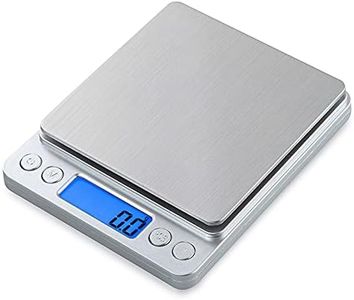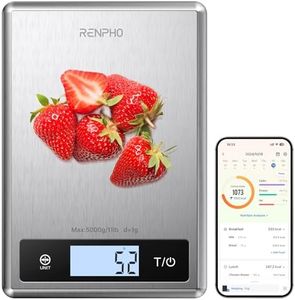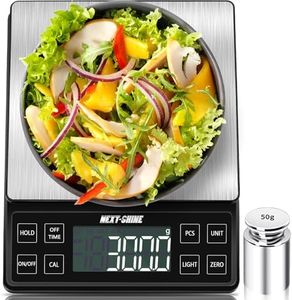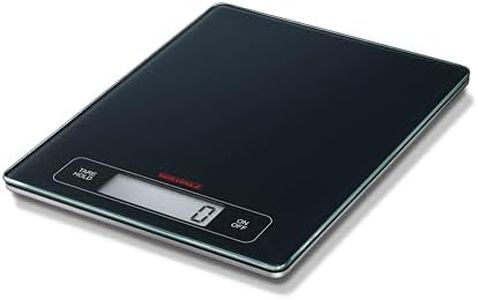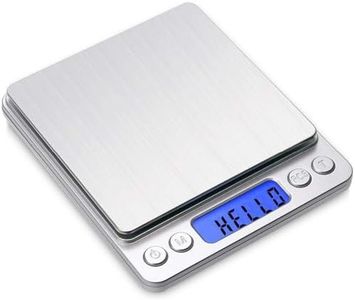We Use CookiesWe use cookies to enhance the security, performance,
functionality and for analytical and promotional activities. By continuing to browse this site you
are agreeing to our privacy policy
10 Best Food Scales
From leading brands and best sellers available on the web.Buying Guide for the Best Food Scales
Choosing the right food scale can be surprisingly impactful for your kitchen efficiency, whether you're tracking portions, baking, or managing dietary needs. Food scales help ensure precision in measuring ingredients, leading to better results in recipes and more accurate nutritional intake. When picking a scale, consider how and where you'll use it most: daily meal prep, occasional baking, or specific dietary tracking. Your needs in terms of precision, ease of cleaning, and portability should always guide your choice.CapacityCapacity refers to the maximum weight the scale can measure. It's important because if you routinely deal with large amounts of food or bulk recipes, you'll want a higher capacity scale. Most household scales range from about 5 kg (11 lbs) up to 15 kg (33 lbs). For casual use and standard kitchen tasks, a 5 kg capacity is often enough. For bulk cooking, you might need a higher maximum. Think about the typical portions you'll be weighing – if you only measure small items like spices or single servings, a lower capacity is sufficient.
Accuracy and IncrementAccuracy, often presented as the smallest increment the scale can show (like 1 g or 0.1 oz), determines how precise your measurements are. This matters most when dealing with ingredients in baking, portion control, or diets that require strict tracking. Scales with increments of 1 gram (or 0.05 oz) are standard and work well for most uses. If you need to weigh things very precisely, such as in baking or for coffee, pick a model with increments down to 0.1 grams. Decide based on the level of detail you require for your cooking or dietary habits.
Units of MeasurementScales can typically display weight in different units, most commonly grams, ounces, pounds, or milliliters (for liquids). Being able to switch between these units makes the scale much more versatile, especially if you follow recipes from diverse sources. Choose a scale that offers all the weight units you're likely to need so you don't have to do manual conversions.
Platform Size and MaterialThe scale's platform is where you place your ingredients, and its size should fit the types of containers or foods you plan to weigh. Larger platforms handle big bowls or plates, while smaller ones are more compact and store easily. Material affects cleaning and durability – stainless steel is sturdy and easy to clean, while glass can look sleeker but may be more prone to breaking. Consider your kitchen space, how easy you want cleaning to be, and what you'll be weighing to decide the best platform for you.
Tare FunctionThe tare function lets you reset the scale to zero after placing a container on it, so you can weigh only the food inside. This feature is essential for accurate measuring, especially if you use your own bowls or need to add ingredients one by one. Most digital scales include this, but it's worth making sure, as it makes kitchen tasks much more convenient and avoids messy calculations.
Display and ReadabilityA clear, easy-to-read display is important for quickly seeing your measurements. Digital readouts are common and should have large, bright digits. If your kitchen lighting is dim, look for a backlit display. Also, think about where the display is positioned – if you frequently use large bowls, make sure the display won't get covered up. Your typical kitchen setup and eyesight should guide you here for efficiency and comfort.
Ease of CleaningSince food scales often come in contact with spills and ingredients, easy cleaning is a practical concern. Scales made from stainless steel or glass are usually wiped clean, while ones with many buttons or ridges may collect debris and be harder to maintain. If you cook often or value quick cleanups, choose a scale with a smooth, water-resistant surface and minimal crevices.
Power SourceScales are powered either by batteries or (less commonly) by being rechargeable. Battery-operated models are portable and convenient but require changing batteries occasionally. Rechargeable ones may save on ongoing costs but need regular charging. Consider how often you use your scale and where you’ll store it – if it’s out of reach of plugs, battery operation might be more practical.
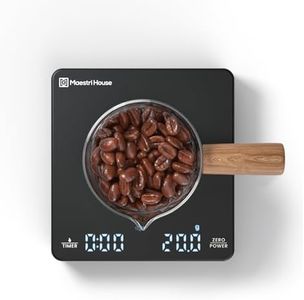

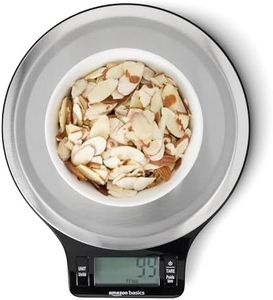

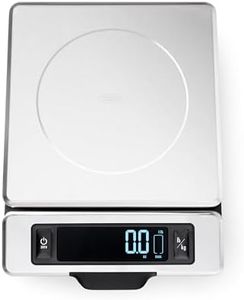
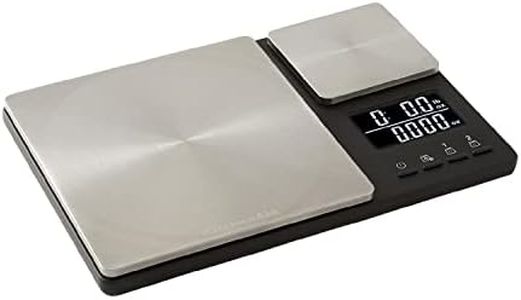
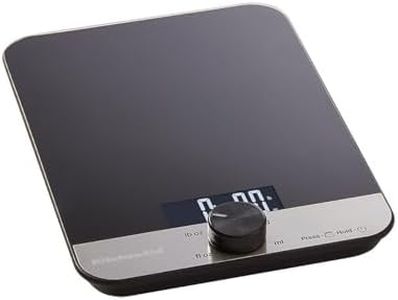
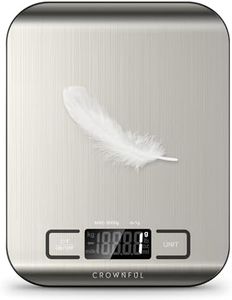

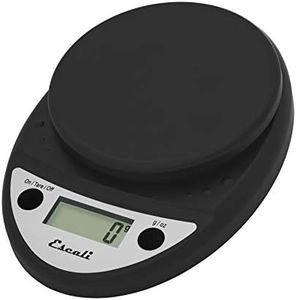
![Kitchen Scale, [10kg/0.01g] [New Version] Diyife Dual Platform Digital Scale Stainless Steel, Small High Precision Food Scale with LCD Display, PCS Features, Tare for Baking, Coffee, Jewelry, Medicine](https://images-proxy.bestreviews.guide/aUpHovc8YnnKYeb1ADsItTgOslc=/0x300/https://m.media-amazon.com/images/I/51eEAvN25cL._AC_CX679_.jpg)

